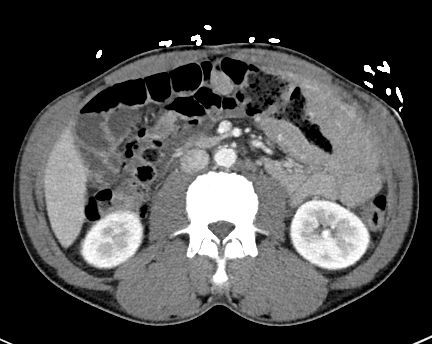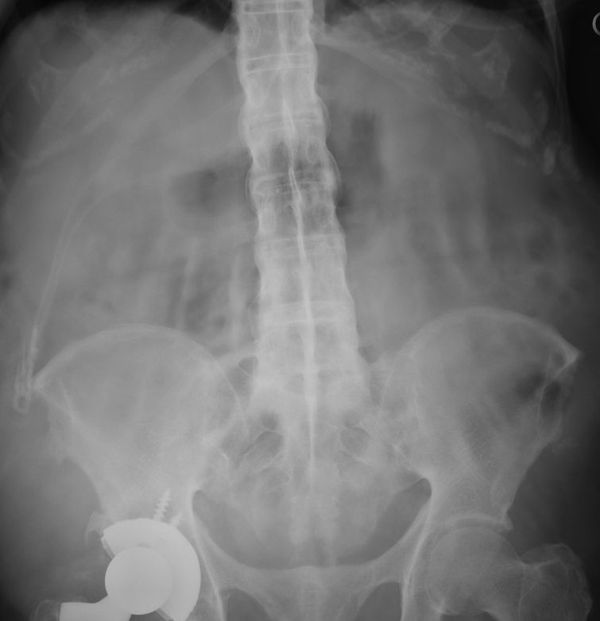Season 10 Case 19
History: Abdominal Pain


Would you like more images?


Answer:
CLICK HERE FOR ANSWER
Large Bowel Lymphoma
Facts:
- Primary lymphoma of the colon is rare, comprising only ~1% of all colonic malignancies.
- On the contrary, the GI tract is the most common site of primary extra-nodal lymphoma (however still only ~1.5% of lymphomas).
- Of GI tract lymphomas, gastric lymphoma is the most common followed by small bowel, with large bowel lymphoma only comprising ~15% of GI tract lymphomas
- Most common type of colonic lymphoma is related to Non-Hodkin's lymphoma (NHL)
- Majority of primary colonic lymphomas arise in the right colon/cecum
- Majority of colonic lymphomas are single in location
Pathology:
- Most common etiology is Non-Hodgkin's lymphoma
- diffuse large B-cell lymphoma subtype to be more specific
- Also associated with:
- mucosa-associated lympoid tissue (MALT) lymphoma
- mantle cell lymphoma
- Increased risk factors:
- HIV/AIDS
- Inflammatory bowel disease (IBD)
- immunosuppression post transplant
Presentation:
- Colonic lymphoma most commonly presents in 40-60yo, with slight male predominance
- Main symptoms are:
- weight loss
- abdominal pain
- rectal bleeding
- abdominal mass
- Despite large size, perforation and obstruction tend to be rare
Findings:
- Can present as:
- large intraluminal polypoid mass (most common)- can grow to extended through the wall into the peritoneal cavity
- focal infiltrative tumor
- aneurysmal dilatation
While perhaps not the most common, the classic Aunt-minnie appearance is that of marked, smooth, long segment circumferential wall thickening WITHOUT bowel obstruction
Overall, when compared to adenocarcinoma:
- lymphoma tends to present with larger, longer segment lesions
- the more common site is proximal colon, particularly around the ileocecal valve, compared to adenocarcinoma which tends towards the distal colon
Treatment:
- Of course it varies based upon location and subtype, but generally includes surgical debulking and systemic chemotherapy.
- Prognosis is still considered to be more directly related to surgical therapy than chemotherapy
Our Patient:


We can see a large amount of smooth, circumferential wall thickening of the distal transverse colon. Yet despite this, we still see stool passing through (ie it is non-obstructive).
This is an example of the classic "Aunt Minnie" finding I was taught, ie circumferential wall thickening with a patent lumen or even luminal dilation. Although it seems somewhat counter-intuitive saying colon mass with a dilated lumen, but the concept is that as the lymphoma infiltrates the interstinal wall, it destroys the myenteric plexus preventing muscular contraction, while also stretching the muscle fibers and destroying the microvasculature yielding to areas of necrosis (which then can lead to cavitation and "aneurysmal" appearance).







